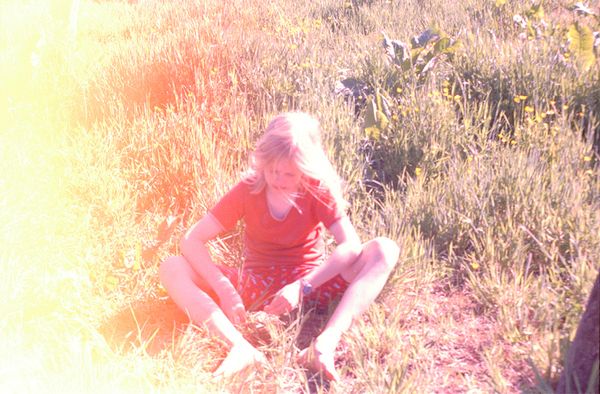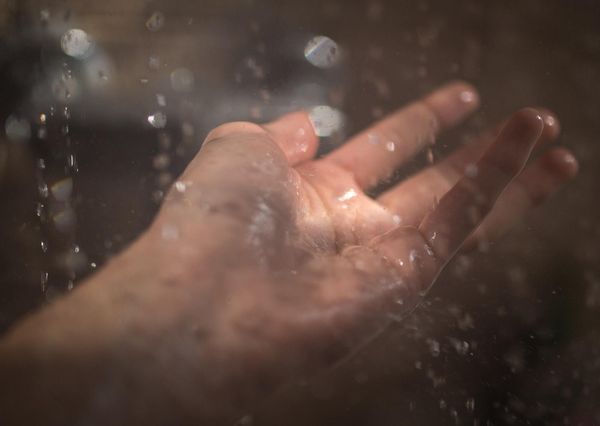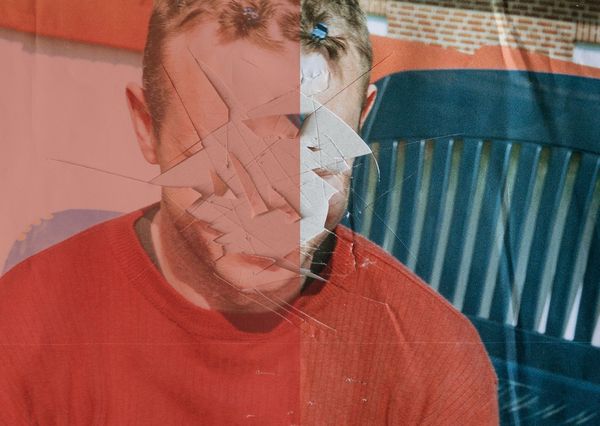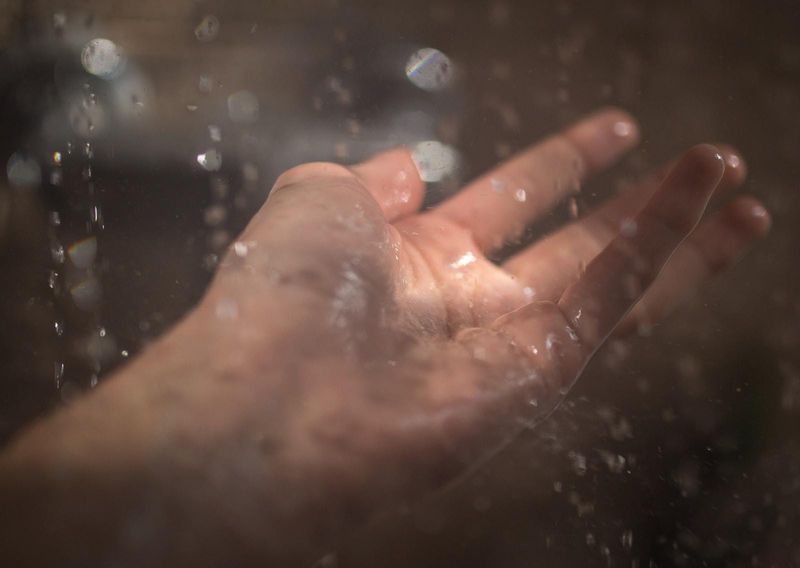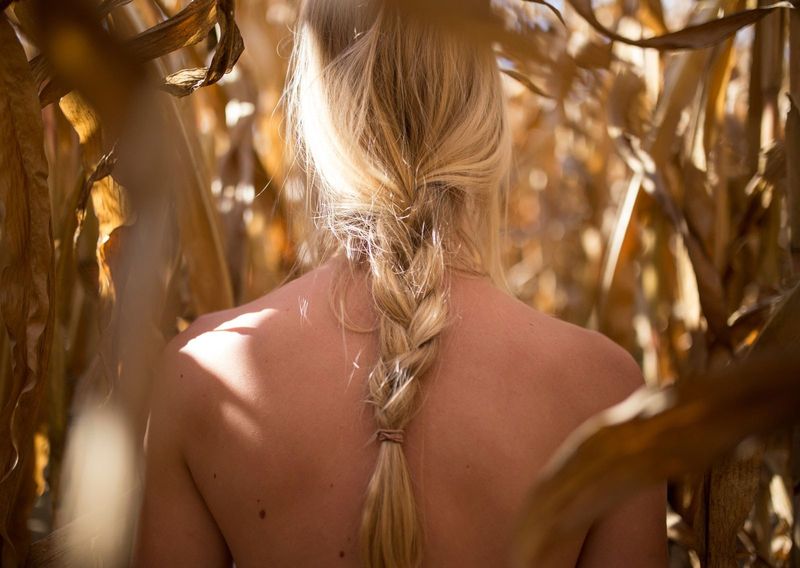Using Photography to Overcome the Pain of Sexual Abuse
-
Published27 Jun 2018
-
Author
In her deeply personal, autobiographical series Für Mich, German photographer Sina Niemeyer tells her story of sexual abuse, turning the camera on herself to understand and overcome what happened to her as a pre-adolescent girl.
In her deeply personal, autobiographical series Für Mich, German photographer Sina Niemeyer tells her story of sexual abuse, turning the camera on herself to understand and overcome what happened to her as a pre-adolescent girl.
© Für Mich
Sina Niemeyer's Für Mich is an autobiographical story of sexual abuse. Her personal project stems from a need to understand her experiences as a pre-adolescent in order to reach a place of forgiveness, and close a chapter that has forever influenced her life. Niemeyer has recently launched a book of the project with the incentive of creating social awareness - "the work is small in size, but heavy in content" her publisher at Ceiba Editions explains.
The photographs don’t look to accuse one specific person, yet they do address the multiple and contradicting emotions a sexually abused person experiences. Today, as an adult, Niemeyer feels the responsibility to raise the profile of sexual abuse for children and women, and she hopes her book can contribute towards this still little discussed topic.
Für Mich is an autobiographical project about your experiences of sexual abuse prior to your adolescence. When did you begin to work on this personal story?
When I was in my teenage years, I began realising what had actually happened. It was a tough time, but I always imagined how at some point I would talk publicly about my experience.
After my good friend and colleague, Arzu Sandal made a very moving book about herself, her family, and the domestic abuse they suffered, I had the first hint about how to work on this subject. Then, in the summer of 2016, I came across Laia Abril’s On Abortion and also the work of Mafalda Rakos who produced a very emotive work about eating disorders, all inspiring me to create my own personal project.
Later, while studying at the Danish School of Media and Journalism (DMJX), I was encouraged by Kent Klich, a mentor at the institution, to produce work about my story. Throughout the process, Søren Pagter, the head of my studies, and my boyfriend were pillars in this process - I am very grateful to both.
Why did you decide to approach this story through photography? What has this creative journey been like?
From a very early age, I always loved to write and photograph, so I already had a lot of material. The actual process of making the book was quite short time wise. I took time to shoot, but soon I realised the results were rather messy. I was soon reminded by my classmates at DMJX that the images needed to be visually compelling, so I simply started looking, feeling and listening very much to my intuition. My camera became my best friend during that period - every time I started crying I would just start photographing, first myself, and then maybe other things. I was very attentive to the moments when my thoughts would go back to those memories.
The very first idea I had was to destroy a lot of images of him, in the ways I had destroyed myself. After, I realised that it would become a bit boring because the results would look alike. Instead I came up with more ideas like going through my archive of texts and photographs, and visiting the places where I had clear memories. I also wrote a diary from which I used a few passages for the book. Despite all the grief, it was also a very relieving time, because it was the first time that I had openly talked to my friends about what had happened and the project I’m doing.
Does the project look to serve as a tool for social change?
I was advised by friends, mentors and colleagues to consider it. Until I made the final decision, it felt like a treasure to me. I knew I didn't want to keep this book for myself. I see it as my duty and responsibility to stand up, to create discussion, and to make others feel less alone. That’s the least and the most I can draw out of this experience.
I am sure that if we, as a society, treated this whole issue differently, it would have been much easier to cope with or perhaps it wouldn’t have even happened. My biggest hope is to open a conversation and raise awareness, and hopefully involve politics as well. I believe in the long run we can prevent these cases. I would also love the book to be available for free in information centres where anyone in need of such work can find it.
Publishing this story is to give something that can hopefully improve our society overall by creating exchange and understanding, and possibly help others who are affected themselves or wishing to know more.
Are there any poignant stories about how the project has been received in Germany that you would like to share?
The process in Germany is quite slow. Some of the responses I have received are "the project is very intimate, basically too intimate for us", or, "it’s a very important project that should be published, but it’s not big enough for us", or people simply don’t reply at all.
I can only guess why this is and I believe it is partly because it is such a shock for some people to see this project. There have been many times when people see the project and are really amazed and very interested in it, then I never hear back from them. It’s kind of a pull-back reaction that I have also experienced with friends when I told them. But luckily, I found enough people elsewhere (especially in Italy!) who have the strength to support me, which I am very thankful for.
I have been trying to reach people on a political level in Germany, but I guess there is a long way to go. Only recently, another artist who is involved in the Council of Victims and Survivors invited me to several conferences and collaborations. Yet, it feels like the most motivated people are the survivors themselves, when in fact, really our politicians should take responsibility and bring this subject to the forefront of contemporary politics.
The project was recently released in a book format. Can you talk about this experience? How was the editing process, where can it be purchased, who published it, etc.?
When I was in Arles last year, I approached many publishers and tried to find the right person to publish the book with. It was an extensive research, meeting and talking to people. I had almost given up, because nothing concrete turned out in the end. Yet I met Markus Schaden from The Photo Book Museum in Cologne, Germany. He was very fond of the book and after some thinking, he mentioned someone whom he knew who would publish the book. That’s how I came in contact with Eva from Ceiba Editions.
Eva is a wonderful and very professional publisher. She was indeed the person I had imagined to work with. One of her credos for her publishing house is collaboration. So based on the dummy that I already had, we took all further decisions together, from the layout to the final printing. Her daughter Giulia contributed with the marvellous cover, which is an interpretation of one of my photos mingling with an aquarelle of an eagle – an animal that has always symbolised freedom and strength for me. Overall, it was a beautiful process of exchanging ideas, inspiring each other and collaborating on a very respectful, professional and fruitful level.
Since I want the book to be able to help others affected as well, I wanted it to be translated in as many languages as possible. The original texts are mostly in English, so for now we have settled on translations in German, Italian, French and Spanish. But, depending on how it goes, I could imagine more translations in possibly Arabic or Hindi. My thoughts behind it - those affected by such violent acts may be teenagers or even children and most likely they won’t have the knowledge to fully understand English. This is why translation is so relevant to the advocacy of this project.
--------------
The book is available online to purchase on the Ceiba Editions website.
--------------
Sina Niemeyer is a German photojournalist living and working between Hamburg, Hannover and Berlin, Germany. Her interest lies in cultural subjects and social issues linked to the human condition. Follow her on PHmuseum and Instagram.
Verónica Sanchis Bencomo is a Venezuelan photographer and curator based in Hong Kong. In 2014, she founded Foto Féminas, a platform that promotes the works of female Latin American and Caribbean photographers. Follow her on Twitter and Instagram.
